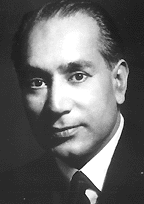Google recently called for applications to its annual Google Science Fair competition held across the globe. Young students aged 13–18 years are invited to submit their innovations and scientific hypotheses. While we Indians constantly crib about lack of indigenous innovation, surprisingly, many Indian students have consistently figured in the top contenders since 2011!
Despite all the drawbacks in our educational system, the opportunities that urban youngsters today get to showcase their talent are immense. That reminded of those science exhibitions that we used to participate in the good old days, when lack of scientific temper among teachers was the biggest hindrance. Well equipped science labs in schools were kept under locks, while teachers struggled to explain scientific theories on blackboard!
While we Indians have immense pride in our cultural heritage and scientific innovation, it is hard to find the evidence on ground. Most innovative ideas, which are either created by a well-funded research institution or by a poor layman, lie unutilised by an apathetic society. This is clearly evident in the immense rejoice the nation felt about Sachin Tendulkar being felicitated with the Bharat Ratna award, while people asking “who is this scientist C N R Rao who is also getting Bharat Ratna?”
Indian scientists lost in history
The history of India is littered with numerous scientists and innovators who brought to light new discoveries or created inventions. On this National Science Day, let’s look at some of little known Indian scientists who excelled in their domains:
Yellapragada Subbarao

Have you heard about India’s earliest known biochemist who discovered the function of adenosine triphosphate (ATP) and the first cancer chemotherapy agent in the 1940s? Today, if the world doesn’t remember much about Yellapragada Subbarao, it could be due to his failure to promote his own interests. Born in Bhimavaram, Andhra Pradesh in 1895, Subbarao joined the Madras Medical College for medical studies after his intermediate education. Although he fared well in his written examinations, he was denied his MBBS degree, since he displeased his professor by wearing khadi surgical dress!
Later in his career, due to a chance meeting with an American doctor, Subbarao went to the U.S. to for doctorate studies at the Harvard School of Tropical Medicine. While studying there, Subbarao developed a method to estimate phosphorus in human body fluids and tissues, along with Cyrus Fiske. This led to the discovery of the role played by phosphocreatine and ATP as the energy source in the living cell. This discovery ensured that Subbarao’s name was listed in the biochemistry textbooks in 1930s. Since he was denied a regular faculty position at Harvard, joined Lederle Laboratories. There, he developed a method to synthesize folic acid, Vitamin B9, and the important anti-cancer drug methotrexate – the first cancer chemotherapy agent, which is still in clinical use!
A patent attorney was astonished to find that Subbarao had not taken any of the routine steps that are used by scientists to link their name to their inventions. His colleague, Nobel laureate in Medicine, George Hitchings said, “Some of the nucleotides isolated by Subbarao had to be rediscovered years later by other workers because Fiske, apparently out of jealousy, did not let Subbarao’s contributions see the light of the day!”
Birbal Sahni

Hope you have heard of paleobotany, the science of studying the evolutionary history of plants and the identification of plant remains from geological contexts. India was blessed to have its first paleobotanist in the pre-independence era itself! Birbal Sahni was the foremost botanists who worked on studying plant species in India as well as the study of fossilised plants.
Born in 1891 in West Punjab, Sahni graduated from Punjab University in 1911. He joined Emmanuel College, Cambridge for his post-graduation, where he studied paleobotany and awarded the Doctor of Science from the University of London for his research on fossil plants. While he was studying at Cambridge, Sahni worked on revising a textbook of botany to suit the requirements of students in India. The Textbook of Botany by Lawson & Sahni became a widely read book both in universities of India.
Sahni returned to India in 1919 and joined the newly created Botany Department of Lucknow University, as its first Professor and Head, a post he held till his death in 1949. He also served as the Head of the Department of Geology in the university. He was also interested in geology, since he believed that palaeobotanical studies should be conducted in relation to the geological and geographical conditions under which the plants thrived. In 1946, Sahni founded the Paleobotanical Society which later established the National Institute of Palaeobotany in 1949. Sahni became the first Indian botanist to be elected as the Fellow of the Royal Society of London.
C R Rao

Calyampudi Radhakrishna Rao, also known as C R Rao is an Indian mathematician and statistician, who is noted for his contributions to the foundations of statistical theory and multivariate statistical methodology. C.R. Rao was born in 1920 in Hoovina Hadagali, Karnataka. He did his M.A. degree in mathematics at the Andhra University and completed his M.A. degree in statistics from Calcutta University. He earned his Ph.D. in 1948 from Cambridge University under the guidance of R.A. Fisher, the father of modern statistics.
Later, C R Rao began working at the Indian Statistical Institute, where he worked until he retired at the age of 60. Under the direction the doyen of Indian statistics, P.C. Mahalanobis, he played an important role in setting up state statistical bureaus in different states of India. Further, C.R. Rao worked towards setting up the Central Statistical Organization and the National Sample Survey Organization, due to which India has one of the world’s best national statistical systems.
Among his best-known discoveries are the Cramér–Rao bound and the Rao–Blackwell theorem on the quality of estimators. Other areas he worked in include multivariate analysis, estimation theory, and differential geometry. His other contributions include the Fisher–Rao Theorem, Rao distance, and orthogonal arrays. Today, at the ripe age of 87, he is still active as the Director of the Center for Multivariate Analysis at Pennsylvania State University.
Continued to Unsung Heroes of Indian Science – Part II
Factfile –
https://www.googlesciencefair.com
http://www.iloveindia.com
http://en.wikipedia.org
http://www.crraoaimscs.org





